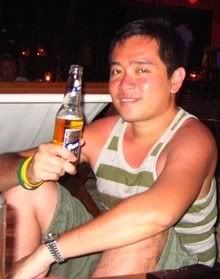| I found this article at http://www.ezilon.com/information/article_476.shtml and boy, wait till my dear mexican classmates in grad school get to read about this and our close historical links. it's very interesting indeed. ================================================= Filipinos in Mexican history By Floro L. Mercene Jan 28, 2005, 00:21 |
In fact, according to Pinzon, two Filipinos became brigade commanders in the army of General Jose Maria Morelos in the state of Guerrero in the Pacific Coast of Mexico from 1810 to 1821.
***
Mexico’s fight for independence from Spain was started by a priest, Fr. Miguel Hidalgo in Dolores in 1810. Morelos picked up the fight in Western Mexico and recruited about 200 Filipino-Mexicans to join his army. The Filipinos were placed under the command of General Vicente Guerrero, who later became the first black president of Mexico.
***
The Filipino brigade commanders under General Guerrero were identified by Ric Pinzon as Francisco Mongoy and Isidoro Montes de Oca. They distinguished themselves in battles against government troops that in Guerrero they are regarded as folk heroes.
When Guerrero finally surrendered in 1829, he was accompanied by two Filipinos acting as his aides, Miguel de la Cruz and a certain Atieh.
***
Ric Pinzon traveled from Acapulco to Mexico City for our interview. A great fan of the Filipinos and their contribution to Mexico’s growth as a nation, he is writing a book on the Filipino presence in his country, a fact largely ignored by historians.
Filipino sailors on the Manila galleons had been traveling to Mexico between 1570 and 1815. Many of them married local girls and settled in Mexico.
***
By Pinzon’s estimate, there are about 200,000 descendants of Filipinos in southern Mexico. They are concentrated in the Costa Grande north of Acapulco. The town of Coyuca 35 miles north of Acapulco was called Filipino town in the old days. There is also a large Filipino community in Colima, about eight hours ride north of Acapulco.
***
Pinzon says three former governors of Guerrero, where Acapulco is located, may have Filipino ancestry. Juan Alvarez, born in Espinalillo, a Filipino colony, became president of Mexico. His son, Juan Alvarez, became governor of Guerrero in the 1870s.
Alejandro Gomez Maganda figured in the 1910 Revolution and also became governor of Guerrero in the 1940s.
***
Filipino influence on Mexican culture is very apparent, especially on Mexico’s Pacific Coast, where people today continue to imbibe tuba, the drink derived from the coconut tree. They are also engage in games like kite-flying which they make with papel de China. Their names for their fishing boats is panga, which they suspect is of Filipino origin.
***
In the 18th century, the Manila galleons were attacked by pirates from England and the Netherlands. To fight them off, the Spanish authorities created a small army of Filipinos called the chino brigade in Acapulco. A total of 108 galleons were built in the Philippines during two and a half centuries of its existence. Four were captured by pirates and about 30 were sunk by typhoons.
The trade ended when the Mexican independence movement began in 1810. The last galleon to reach Acapulco was the Magallanes.

No comments:
Post a Comment